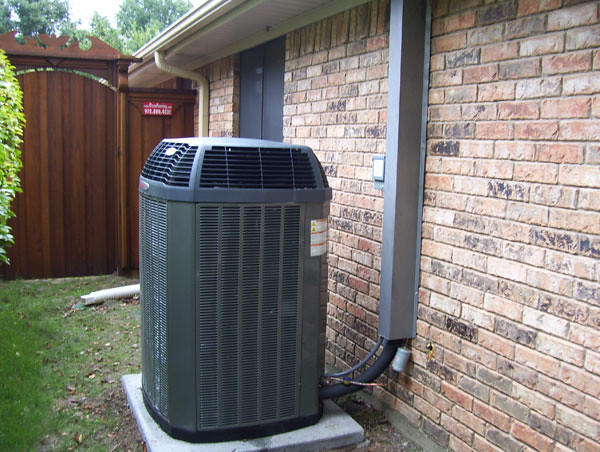Maintaining a Trane air conditioner at home is crucial for ensuring efficient cooling performance, prolonging its lifespan, and keeping your home comfortable throughout the hot summer months. This comprehensive guide will walk you through the essential steps to service your Trane AC unit, covering everything from coil maintenance to refrigerant level checks and regular upkeep.
Coil Maintenance: Ensuring Optimal Heat Transfer
The evaporator and condenser coils are the heart of your Trane air conditioner, responsible for absorbing and dissipating heat. Proper coil maintenance is crucial for maintaining efficient cooling and preventing costly breakdowns.
Evaporator Coil Cleaning
- Accessing the Evaporator Coil: Locate the indoor unit of your Trane AC system, which typically houses the evaporator coil. This may require removing the access panel or front cover.
- Cleaning the Coil: Use a soft-bristled brush or a specialized coil cleaning brush to gently remove any dust, dirt, or debris buildup on the coil fins. Avoid using sharp objects that could damage the delicate coil.
- Rinsing the Coil: Mix a mild, pH-balanced coil cleaner with water according to the manufacturer’s instructions. Using a spray bottle or a garden hose with a low-pressure nozzle, gently rinse the coil, ensuring that all the cleaning solution is removed.
- Drying the Coil: Allow the coil to air dry completely before reassembling the unit.
Condenser Coil Cleaning
- Accessing the Condenser Coil: Locate the outdoor unit of your Trane AC system, which houses the condenser coil.
- Removing Debris: Use a soft-bristled brush or a garden hose to remove any leaves, twigs, or other debris that may have accumulated around the condenser coil.
- Cleaning the Coil: Mix a mild, pH-balanced coil cleaner with water according to the manufacturer’s instructions. Using a spray bottle or a garden hose with a low-pressure nozzle, gently rinse the coil, ensuring that all the cleaning solution is removed.
- Drying the Coil: Allow the coil to air dry completely before reassembling the unit.
Refrigerant Level Maintenance: Ensuring Optimal Cooling Capacity
 Image source: Flickr by Jackie Bese
Image source: Flickr by Jackie Bese
Proper refrigerant levels are essential for your Trane air conditioner to operate at peak efficiency. Refrigerant levels should be checked and adjusted by a licensed HVAC professional before the cooling season begins.
Refrigerant Level Inspection
- Contacting an HVAC Professional: Schedule an appointment with a licensed HVAC technician who is EPA Section 608 certified to inspect and, if necessary, recharge your Trane AC unit’s refrigerant levels.
- Refrigerant Charge Verification: The technician will use specialized equipment to measure the refrigerant charge and ensure it is within the manufacturer’s recommended range for your specific Trane AC model.
- Refrigerant Recharge: If the refrigerant levels are low, the technician will carefully add the appropriate type and amount of refrigerant to restore the system to its optimal operating condition.
Blower Maintenance: Ensuring Efficient Air Circulation
The blower, responsible for circulating the newly cooled air throughout your home, is a critical component of your Trane air conditioner. Regular inspection and cleaning of the blower can help maintain optimal airflow and indoor air quality.
Blower Inspection and Cleaning
- Accessing the Blower: Locate the indoor unit of your Trane AC system, which typically houses the blower. This may require removing the access panel or front cover.
- Inspecting the Blower: Visually inspect the blower for any signs of wear, damage, or excessive dust buildup. Check the blower wheel for any imbalance or debris.
- Cleaning the Blower: Use a soft-bristled brush or a vacuum cleaner with a hose attachment to gently remove any dust or debris from the blower wheel and the surrounding area. Avoid using compressed air, as it can push debris deeper into the system.
- Lubricating the Blower Motor: If the blower motor has accessible lubrication points, apply a few drops of the recommended lubricant to maintain smooth operation.
Regular Maintenance: Ensuring Long-Term Performance
Regular maintenance performed by a licensed HVAC professional is essential for keeping your Trane air conditioner running at its best. This includes comprehensive inspections, cleaning, and any necessary repairs or adjustments.
Bi-Annual Maintenance Visits
- Spring Maintenance: Schedule a maintenance visit with an HVAC professional before the cooling season begins. This visit should include a thorough inspection of all components, cleaning of the coils and blower, and any necessary adjustments or repairs.
- Fall Maintenance: Schedule a second maintenance visit with an HVAC professional after the cooling season ends. This visit should focus on preparing the system for the upcoming heating season, including inspecting and cleaning the components, and ensuring the system is ready for the transition.
Outdoor Unit Maintenance
- Clearing the Area: Keep the area surrounding the outdoor AC unit clean and free of any debris, such as leaves, twigs, or vegetation. Maintain a clearance of at least 2 feet around the unit to ensure proper airflow.
- Leveling the Unit: Check the outdoor unit’s level and adjust it if necessary to prevent misalignment and premature wear of the components.
- Protecting the Unit: Consider installing a protective cover or enclosure for the outdoor unit during the off-season to shield it from the elements and prevent damage.
By following these comprehensive steps, you can ensure your Trane air conditioner operates at peak efficiency, maintains optimal cooling performance, and enjoys a longer lifespan. Remember to always prioritize safety and consult a licensed HVAC professional for any complex or potentially dangerous tasks.
